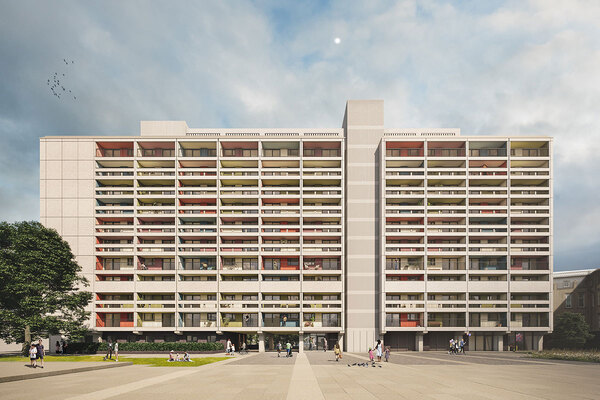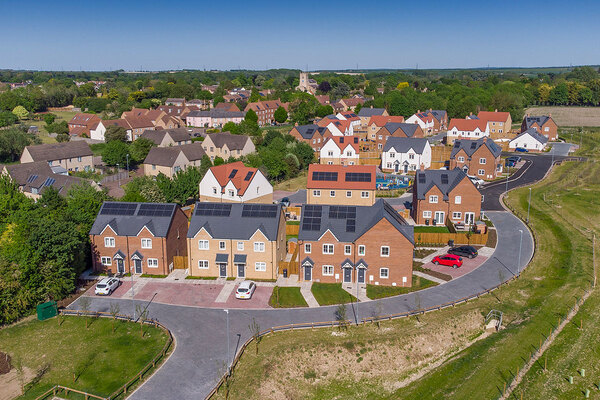Why the North East is being left behind on retrofit
Anna Moore, founder and chief executive at Domna, is using her technical know-how to lead the charge to retrofit homes - more than 25,000 at the last count. Having seen both the urgency of the challenge and the scale of the opportunity, Anna explains how better coordinated action between government and the private sector can deliver the change this country needs.
A net-zero target at risk
Few underestimate the scale of the challenge in meeting Britain’s 2030 target of greening its ageing leaky Victorian housing stock. But new data in the English Housing Survey reveals a shocking disparity in what homeowners in different regions will have to fork out.
Properties in the North East can cost five times as much as those in neighbouring Yorkshire to bring up to standard. And as mortgage lenders and potentially insurers inflate prices or remove products altogether for the hardest-to-heal homes, impoverished communities already struggling with the legacy of deindustrialisation will inevitably be hit hardest.
According to official data, the median cost of upgrading a non-decent home (defined as failing to meet statutory health, safety, and repair standards) in the North East is £12,200. In neighbouring Yorkshire and the Humber, it’s just £2,490. Given similar household incomes, these differences point to structural inefficiencies and market failures.
Why the North East is left behind - and why do inequalities persist
The North East’s housing stock is in significantly poorer condition, with more “Category 1 hazards” – meaning properties are colder, mouldier and need more cash spent on them.
Lower property values compound the problem. With an average North Eastern home worth £189,000 compared to £230,000 in Yorkshire, a 19% value uplift from retrofit delivers less of a return and will cost more as the upfront cash required is a far greater proportion of the asset value.
The hidden costs of inaction
Failing to retrofit is costly. Those in non-decent homes pay £600 more a year in energy bills – something which disproportionately hurts social housing tenants or cash poor homeowners. It traps households in a cycle where high bills block investment in improvements leaving taxpayers to pick up a bigger bill later.
Finance is another barrier. Government schemes such as the Green Homes Grant and the Social Housing Decarbonisation Fund have seen low uptake, failing to deliver retrofit at anywhere near the pace and scale required.
Unlike parts of Europe where green loans at preferential rates are common, UK homeowners face limited and complex funding options. Fixing this fragmented financing landscape would go a long way to broadening access to crucial work.
Why this hits working-age taxpayers hardest
ONS data confirms the North East is among the UK’s poorest regions, while the English Housing Survey shows that working-age households (30–44) are twice as likely as over-65’s to live in damp homes.
A framework for private sector leadership
We have seen that the private sector is ready to commit significant capital to retrofit but only if the right regulatory environment is in place. This ranges for major banks lending cash against future savings and pension funds seeking the steady income returns and capital value boosts that come from acquiring low rated EPC properties and doing them up. Scale is required to do more of this and the systems used to deploy grant money and analyse data need to be refined.
Aligning policy across housing, energy, and finance; to ensure low-cost, below-market debt is available to those in need; making funding schemes straightforward and accessible rather than mired in bureaucracy; and providing the regulatory stability investors need to plan for the long term. Banks and insurers such as Barclays, Lloyds, and Aviva already have legal obligations to report on their carbon exposure, and financing large-scale retrofit would help them meet those obligations. Lloyds, for example, has launched dedicated funds to support green financing, like the clean growth financing initiative.
Capitalising on this opportunity to modernise our most critical infrastructure is crucial. Cutting endless application costs, and building consistent financial incentives could unlock private investment immediately. And if the long term benefits help reduce communities feeling left behind, then Britain’s social cohesiveness as well as its net zero commitments, can be strengthened.



